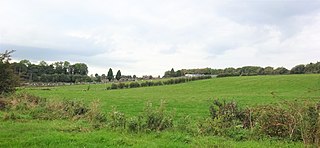
Robert Baillie was a Scottish conspirator incriminated in the Rye House Plot against King Charles II. He was executed for treason.
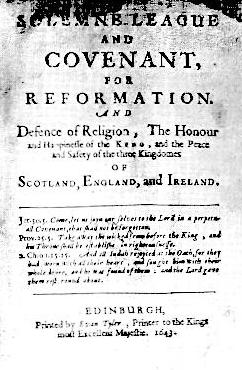
The Solemn League and Covenant was an agreement between the Scottish Covenanters and the leaders of the English Parliamentarians in 1643 during the First English Civil War, a theatre of conflict in the Wars of the Three Kingdoms. On 17 August 1643, the Church of Scotland accepted it and on 25 September 1643 so did the English Parliament and the Westminster Assembly.

John Maitland, 1st Duke and 2nd Earl of Lauderdale, 3rd Lord Maitland of Thirlestane KG PC, was a Scottish politician and leader within the Cabal Ministry.

William Hamilton, 2nd Duke of Hamilton KG was a Scottish nobleman who supported both Royalist and Presbyterian causes during the Wars of the Three Kingdoms.

Donald Cargill was a Scottish Covenanter who worked to uphold the principles of the National Covenant of 1638 and Solemn League and Covenant of 1643 to establish and defend Presbyterianism. He was born around 1619, and was the eldest son of Laurence Cargill of Bonnytoun, Rattray, Perthshire, a notary public, and Marjory Blair. He was educated perhaps at University of Aberdeen and at the University of St Andrews, where he matriculated as a student of St Salvator's College in 1645. He was licensed by the Presbytery of St Andrews on 13 April 1653 and was ordained in 1655. He was later deprived by the Privy Council, on 1 October 1662, for disobeying the Act of Parliament in not keeping a day of thanksgiving for His Majesty's Restoration, and not obtaining presentation and collation from the archbishop before 20 September. He was ordered at the same time to remove beyond the River Tay before 1 November under penalties. Disregarding this sentence, he was charged to appear before the Council on 7 January 1669, and appointed to continue in his confinement, but on petition he was allowed to visit Edinburgh about law affairs. He turned down an offer of a parish at Eaglesham and refused to appear before the privy council to account for his unauthorised preaching. On 16 July 1674 he was affectedly outlawed for holding conventicles and subsequently declared a traitor. In 1679 he joined Richard Cameron in founding the Cameronians, who embodied their principles in a Declaration at Sanquhar, on 22 June 1680, disowning the king's authority. A reward of 3000 merks was offered for his apprehension, dead or alive. For excommunicating at Torwood in September 1680 Charles II., James, Duke of York, and others, the Privy Council increased the reward to 5000 merks. After numerous hair-breadth escapes he was apprehended at Covington Mill, Lanarkshire, during the night of 12 July 1681 by a party of dragoons led by James Irving of Bonshaw. Tried for treason before the High Court of Justiciary, he was found guilty, and executed at the Cross of Edinburgh with four others [Walter Smith, William Cuthil, William Thomson, James Boig], 27 July 1681. His forfeiture was rescinded by Act of Parliament 4 July 1690. He married Margaret, daughter of Nicol Brown, burgess of Edinburgh, widow of Andrew Bethune of Blebo.
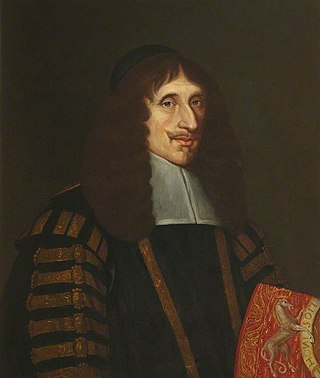
John Campbell, 1st Earl of Loudoun was a Scottish politician and Covenanter.

Archibald Campbell, Marquess of Argyll, 8th Earl of Argyll, Chief of Clan Campbell was a Scottish nobleman, politician, and peer. The de facto head of Scotland's government during most of the conflict of the 1640s and 1650s known as the Wars of the Three Kingdoms, he was a major figure in the Covenanter movement that fought for the maintenance of the Presbyterian religion against the Stuart monarchy's attempts to impose episcopacy. He is often remembered as the principal opponent of the royalist general James Graham, 1st Marquess of Montrose.

Between 1639 and 1652, Scotland was involved in the Wars of the Three Kingdoms, a series of wars starting with the Bishops' Wars, the Irish Rebellion of 1641, the English Civil War, the Irish Confederate Wars, and finally the subjugation of Ireland and Scotland by the English Roundhead New Model Army.

Cameronian was a name given to a radical faction of Scottish Covenanters who followed the teachings of Richard Cameron, and who were composed principally of those who signed the Sanquhar Declaration in 1680. They were also known as Society Men, Sanquharians, and Hillmen. The Societies of Cameronians for the Maintenance of the Presbyterian Form of Worship were formed about 1681. There is no evidence that organised bands came from any parish or district to either Drumclog or Bothwell Bridge in June 1679. The United Societies were not in existence at that period. After 1688 it was different. The Covenanters were by then organised in their Societies which were again united in larger groups called "Correspondences."

The Engagers were a faction of the Scottish Covenanters, who made "The Engagement" with King Charles I in December 1647 while he was imprisoned in Carisbrooke Castle by the English Parliamentarians after his defeat in the First Civil War.
In Welsh and English church history, Independents advocated local congregational control of religious and church matters, without any wider geographical hierarchy, either ecclesiastical or political. They were particularly prominent during the Wars of the Three Kingdoms as well under the Commonwealth and Protectorate. The New Model Army became the champion of Independent religious views and its members helped carry out Pride's Purge in December 1648.
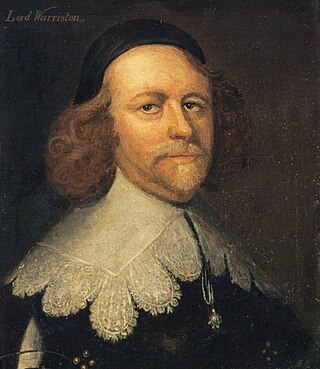
Archibald Johnston, Lord Wariston was a Scottish judge and statesman.

The Battle of Preston, fought largely at Walton-le-Dale near Preston in Lancashire, resulted in a victory for the New Model Army under the command of Oliver Cromwell over the Royalists and Scots commanded by the Duke of Hamilton. The Parliamentarian victory presaged the end of the Second English Civil War.

Covenanters were members of a 17th-century Scottish religious and political movement, who supported a Presbyterian Church of Scotland and the primacy of its leaders in religious affairs. The name is derived from covenant, a biblical term for a bond or agreement with God.

The Restoration was the return of the monarchy to Scotland in 1660 after the period of the Commonwealth, and the subsequent three decades of Scottish history until the Revolution and Convention of Estates of 1689. It was part of a wider Restoration in the British Isles that included the return of the Stuart dynasty to the thrones of England and Ireland in the person of Charles II.
The Western Remonstrance was drawn up on 17 October 1650 by Scotsmen who demanded that the Act of Classes (1649) was enforced and remonstrating against Charles, the son of the recently beheaded King Charles I, being crowned King of Scotland. It was presented to the Committee of Estates by Sir George Maxwell, at Stirling, on 22nd of that month. Those who supported the Remonstrance are known as Remonstrants, or Remonstraters.

James Guthrie, was a Scottish Presbyterian minister. Cromwell called him "the short man who would not bow." He was theologically and politically aligned with Archibald Johnston, whose illuminating 3 volume diaries were lost until 1896, and not fully published until 1940. He was exempted from the general pardon at the restoration of the monarchy, tried on 6 charges, and hanged in Edinburgh.
The Western Association was a Scottish military association to coordinate the military forces of the south western counties of Scotland during the War of the Three Kingdoms.
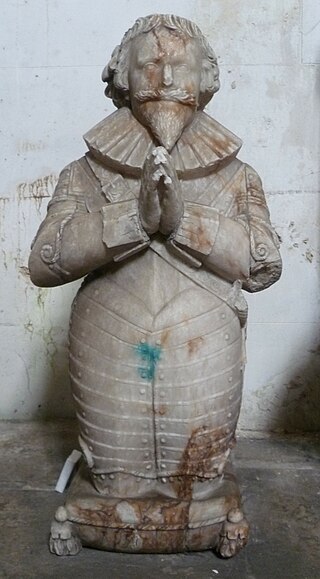
Scottish religion in the seventeenth century includes all forms of religious organisation and belief in the Kingdom of Scotland in the seventeenth century. The 16th century Reformation created a Church of Scotland, popularly known as the kirk, predominantly Calvinist in doctrine and Presbyterian in structure, to which James VI added a layer of bishops in 1584.
 One or more of the preceding sentences incorporates text from this source, which is in the public domain : Chisholm 1911 , p. 462
One or more of the preceding sentences incorporates text from this source, which is in the public domain : Chisholm 1911 , p. 462











